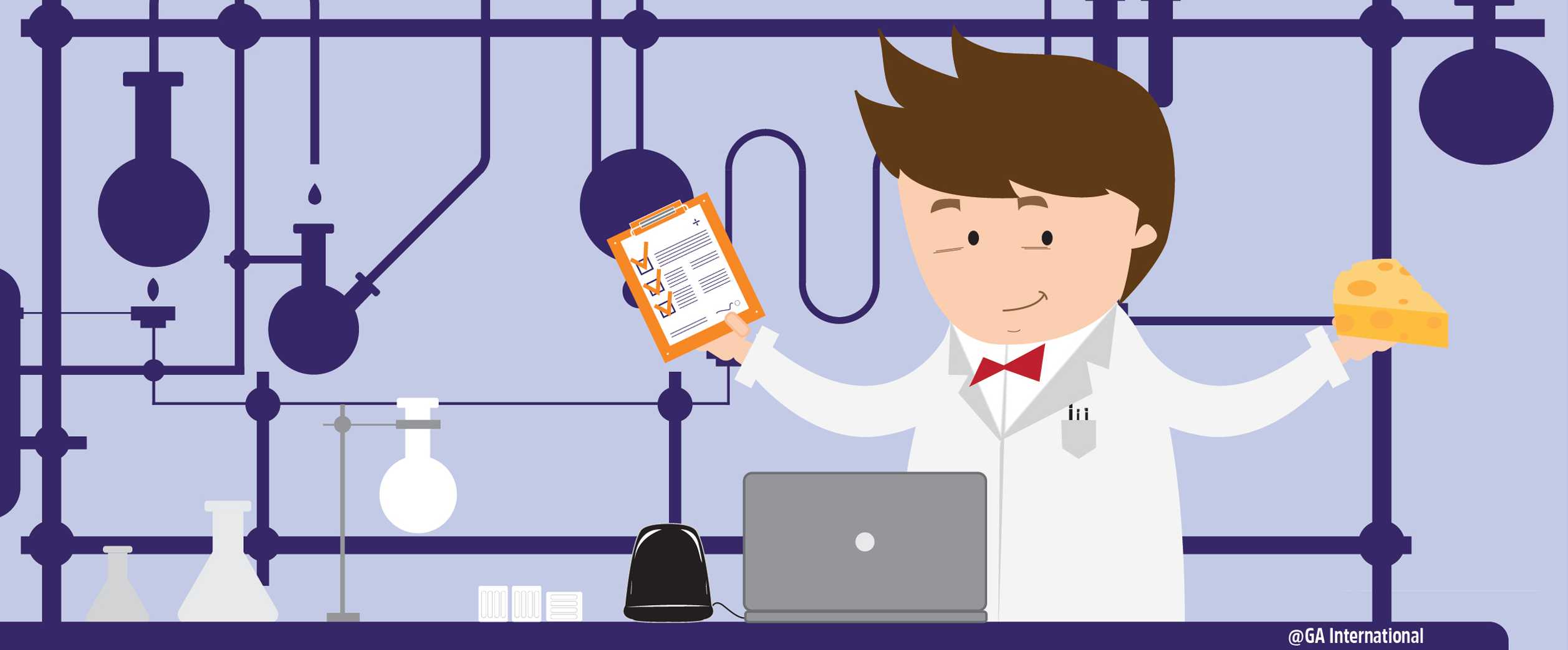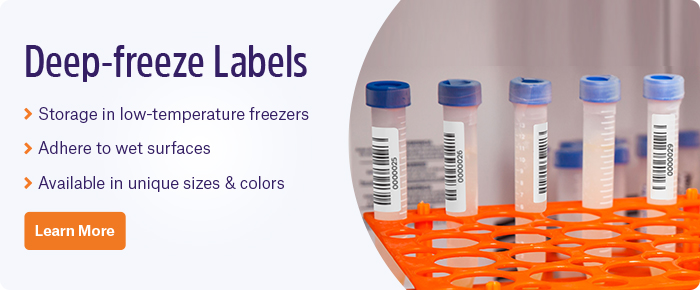 Managing a productive lab and keeping it running smoothly isn’t an easy thing to do. Below, we’ve listed several tips that can set your lab up for continued success, whether your grant deadlines are fast approaching or you’re dealing with an inordinate number of samples.
Managing a productive lab and keeping it running smoothly isn’t an easy thing to do. Below, we’ve listed several tips that can set your lab up for continued success, whether your grant deadlines are fast approaching or you’re dealing with an inordinate number of samples.
#1 – Keep track of your stuff
Your inventory comprises all the reagents and specimens your lab will require for experimentation or diagnostic analysis. The most efficient way of maintaining inventory is having a method to categorize, identify, and track samples that utilize barcodes. However, the labels you use for your tubes, vials, boxes, and racks must be appropriate for the environment they’ll encounter. For example, cryogenic labels are ideal for any specimens or cell lines stored in liquid nitrogen or reagents stored in freezers. It also helps to alphabetize your inventory, where possible. Sifting through a cabinet of potentially hazardous chemicals is made easier when everyone knows exactly where to find each reagent.
#2 – Maintenance is key
Maintaining lab infrastructure is crucial to ensuring the integrity of your samples and reagents. Freezers and refrigerators need to be maintained at the right temperature, liquid nitrogen tanks need to be replenished, and the CO2/O2 concentrations must be balanced in each incubator. Systems that can monitor your storage equipment, providing real-time updates and notifications while keeping detailed logs and reports of all parameter-related activity help automate this process, and ensure nothing is missed. Using a cloud-based framework, these types of systems can incorporate all reports into a single interface that will alarm the members of the lab when something goes wrong. Remember, general contamination can be avoided by continually cleaning your bench with sanitizing wipes, 70% ethanol solution, or bleach, consistently applying UV to your biosafety cabinet when you’re not using it, and replenishing the water supply of your water baths regularly. It’s also a good idea to de-ice your freezers occasionally to remove excess ice that could block the door.
#3 – Stay organized
Investing time in workflow management will help you track inventory, improve sample traceability, and increase the overall productivity of your personnel. Implementing a laboratory information management system (LIMS) is the best way to do this, as a LIMS will note the movement of each sample through the testing process, track its chain of custody, and allow users to readily schedule downstream processing, testing, and analysis. Using barcoded labels is critical to getting the most out of your LIMS, as both will aid in sample tracking and traceability.
Coordination and communication are also important when implementing any system that optimizes workflow. Having regular lab meetings will allow you to set up and maintain any LIMS you wish to employ, as will keeping a clean record of all lab activities using the LIMS and well-annotated lab books. Detailed, legible lab books and well written SOPs are crucial to keep your lab running long-term, particularly in academic labs, where students and post-docs perform the bulk of the work over several years before leaving once their degree or contract is finished. Future students and staff depend on these books to design and implement protocols, making them an integral part of your lab’s workflow. One great way of keeping your books organized is by using labels in your lab book that match the labels of the samples being analyzed.
#4 – It’s the system, not the people
Errors are inherent to any lab, no matter how organized it is. From medicine, we know that using the “bad apple” approach of reprimanding those that make mistakes isn’t as efficient as openly discussing the errors and designing barriers that will reduce the likelihood of them reappearing. By implementing barriers, you will lessen the chances that mistakes will stack up, causing unforeseen consequences. Keeping a proper inventory, maintaining lab infrastructure, and organizing your workflow are some of the different types of barriers labs can use to prevent critical errors. Recording all relevant information in your lab books will also help resolve issues, as each experiment or test can be verified with accurate documentation, even if the scientist is no longer a member of the lab.
#5 – Use common sense
Some labs specialize in performing a small set of techniques that require specific labels (e.g. xylene-resistant labels for histochemistry labs, while others do a bit of everything. Moreover, most labs don’t have unlimited resources with which to purchase equipment and labels. As such, a one-size-fits-all approach to managing the lab is never going to work, so it’s important to assess what are the most pressing problems and to come up with sensible solutions, from both organizational and financial standpoints. Oftentimes, simple solutions are the best ones. For example, it makes sense to have sign-up sheets—either paper or online—for machines like thermocyclers, biosafety cabinets, and centrifuges, especially when they’re shared across labs.
#6 – Think outside the box
As any good scientist will tell you, just following the current trends will never get you ahead. Thinking outside the box, even for simple things like matching each well of a 96-well plate to the placement of the tip from a box of 96 tips, can help avoid errors in the lab and can increase the pace of your research.
#7 – Teamwork
Efficient communication is important regardless of the type of lab you work in, but with each member habitually working on different projects or techniques, its easy to fall out of the habit of working together. Lab meetings are a great way to problem-solve, especially at the beginning of the week, so everyone knows what they’re tasks are and how to accomplish them. Establishing relationships with your colleagues outside of the lab helps as well, as everyone ought to be invested in each others’ successes, especially since they benefit the entire lab in the long run. This can be as simple as buying a cake for each member’s birthday.
LabTAG by GA International is a leading manufacturer of high-performance specialty labels and a supplier of identification solutions used in research and medical labs as well as healthcare institutions.
What are some ways you keep your lab efficient? Tell us in the comments down below.



I thought it was interesting when you talked about how the most efficient way to keep track of inventory in a laboratory is by utilizing a barcode system. If I were to guess, many labs utilize culture media that are stored in small bottles and can have hundreds of bottles at a time. It seems like using a barcode system would make storing and accessing these items fairly simple.
That’s true Thomas! It makes for a much more efficient lab system and for categorizing all the different lab samples.
-Michelle at GA International
Hello! Great article! Could you clarify this statement? “Keeping a proper inventory, maintaining lab infrastructure, and organizing your workflow are all types of barriers labs can be used to prevent critical errors.” I’m confused how “all types of barriers” fits into the message.
Hi, thanks for reading. I have rewritten the sentence to make it more clear. These are some of the “barriers” that can be implemented to prevent errors.